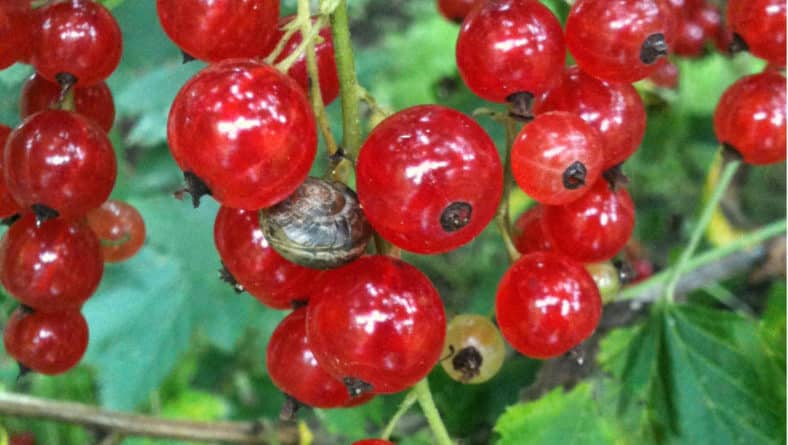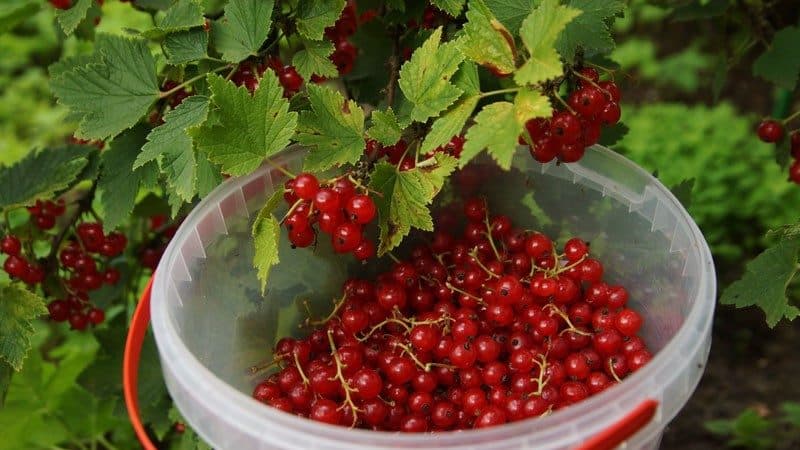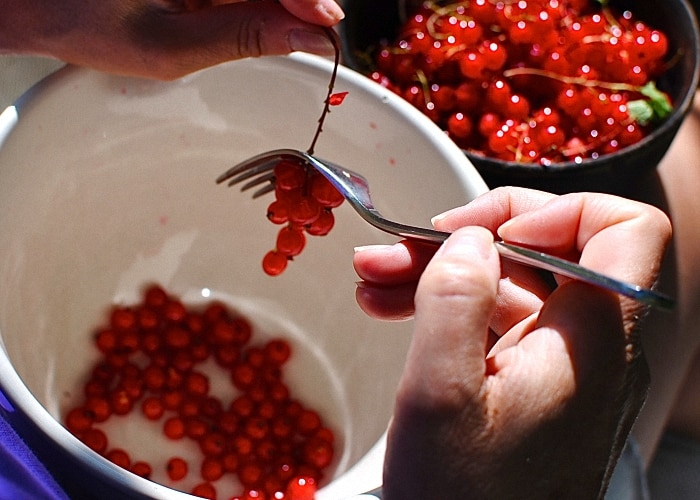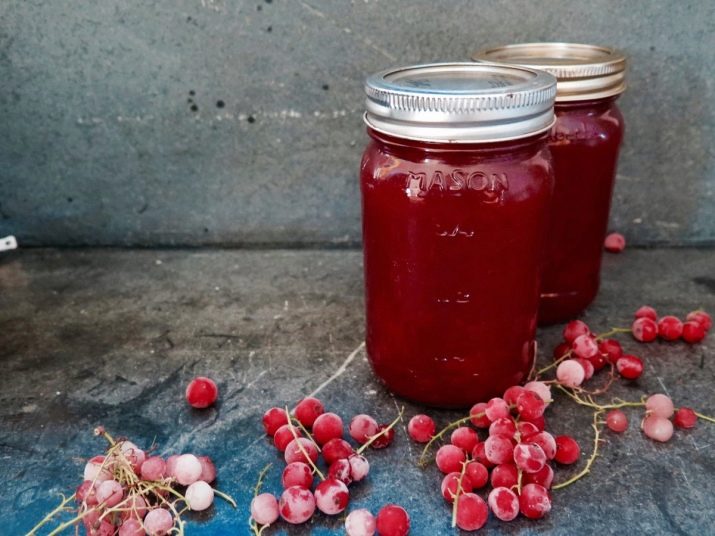When to pick redcurrants and how to do it quickly
Red currant is one of the most unpretentious berry bushes. The plant is not afraid of damp and dry weather and can grow even in cold regions of our country. The berries of the crop are high in vitamins, minerals and other beneficial substances. Therefore, most gardeners grow red currants.
In order for the berries to be stored for a long time and bring the greatest benefit to the body, it is important to collect them correctly and in a timely manner. The process of harvesting currants is considered long and painstaking, since each bush ripens a huge number of small fruits with delicate skin. When and how to collect red currants, read the article.
When to pick red currants
The period when red currants ripen depends on two factors - the region in which the plant grow, and varieties. The warmer conditions a crop grows in, the faster it will produce a harvest.
Lighting matters too. In the sun the fruits turn red faster. For this reason, the harvest on young bushes ripens earlier than on mature bushes. Indeed, in the first case, the fruits do not shade the thick branches.

The uniformity of ripening is determined in advance by flowering. If it was long, then the ripening of the fruits will occur gradually and will take 2-4 weeks. In this case, the crop is harvested as needed.
If the bush blooms evenly (all inflorescences are formed at the same time, flowering is short), then the fruiting time will not be delayed, and ripening will be smooth. In this case, the berries are removed from the bush at one time.
In contrast from black currant Red berries are not prone to shedding. They can hang on the bush when ripe for several weeks. They do not need to be picked as soon as they turn red, while the black fruits are removed from the plant as they ripen in several passes.
Note! On average, red currants ripen 2 weeks earlier than black ones.
Depending on the growing region
You can find out when currants ripen by taking into account the regional averages.
Approximate ripening times in different climatic zones of Russia:
- Central Russia (Leningrad, Moscow, Tver regions, etc.), Volga region. Most varieties ripen in mid-July. The early varieties are harvested in June.
- Southern regions (Krasnodar region, Crimea). The harvest season lasts from early June to late July.
- Northern regions (Siberia, Ural). From early to mid August.
Depending on the variety of red currant
Wild currants usually ripen unfriendly. The first fruits are harvested in early summer and finished at the end of August.
Ripening time depends on varieties:
- Early. Such berries should ripen earlier than others. In temperate climates, the ripe crop can be harvested as early as the end of June. Early varieties - Early sweet, Joker Van Tets, Ogni Ural, Shchedraya.
- Mid-season. In the central regions they ripen in mid-July. They ripen 2 weeks later than the early ones. Mid-season varieties of red currants include Ural Beauty, Houghton Castle, Detvan, Versailles red, Vika.
- Late. They sing later than others. In the Moscow region, ripeness occurs in the second half of August. These varieties include Tatyana, Rosetta, and Dutch Red.
How to determine the ripeness of berries
Red currants acquire their characteristic shade before full ripeness. Unripe berries are not suitable for making compotes, jam, or freezing. It is very sour, so eating it fresh is also not recommended.
To understand that the currants are ripe, pay attention to the following parameters:
- Color. Ripe berries are deep red, without an orange tint or green areas.
- Texture. The berries should be soft but elastic and crush easily when pressed.
- Taste. Ripe currant fruits are sweet and sour. If there is no sweetness in the berries, it means they are not ripe.
- Twigs, on which ripe berries hang, acquire a yellowish tint.
- Ease of separation from the bush. Ripe berries are easy to tear off from the stalk, on which a small amount of wet pulp remains.
Collection of unripe fruits
If the currants are intended for sale and long-term transportation is expected, fruits that have not yet fully ripened are collected. They should take on a reddish tint, but remain firm and elastic.
It is not recommended to eat unripe currants. It has not accumulated useful substances, and due to increased acidity it can cause exacerbation of gastrointestinal diseases.
Such berries do not wrinkle during transportation and are stored for more than 2 months. They are sent to the refrigerator, in which they will ripen for 2-4 weeks. This method of ripening will not affect the taste, but there will be fewer vitamins in the fruits.
Rules for collecting red currants

Picking red currant berries is a painstaking task.The fruits have delicate skin and are easily damaged, so work is carried out only by hand. It is important to follow a number of rules:
- The berries are harvested as soon as they are ripe. Overripe fruits crumble, crack, are poorly stored, and cause damage to the berries with which they lie.
- Currants should be picked early in the morning or at sunset, when the sun is inactive. Harvesting during the period of greatest solar activity (in the heat) negatively affects the quality of the fruits and reduces their shelf life.
- The berries are picked in dry weather. You cannot pick the fruit after rainfall. When wet, the berries have a much shorter shelf life.
- Usually currants ripen unevenly. Therefore, the work on its preparation is divided into several stages.
- Currants are hidden in boxes or buckets. Do this carefully so as not to crush the delicate berries. It is better to lay the currants in even layers.
- When picking, make sure that all the berries on the branch are already ripe. Unlike black currants, red currants do not fall off until all the fruits on the branch are ripe.
It is recommended to collect and prepare red currants with twigs, since when picked, the peel of the delicate berries is damaged. The juicy pulp begins to flow, the keeping quality of the fruit decreases.
At home, currants are stored on branches. The berries are separated from the stalks immediately before consumption or cooking.
If you plan to preserve currants immediately after harvesting, they are collected without branches. In this case, the berries are placed in containers in small layers so that they do not wrinkle.
Note! Black currants have a tougher skin than red currants, so they are usually picked berry by berry. White currants differ from red ones only in taste and color. The timing of its ripening, methods of collection and preparation are the same.White berries are also picked in whole bunches.
Easy ways
Harvesting currants is a long and painstaking process. To speed it up and make it easier, experienced gardeners use various tricks.
How to quickly pick currants:
- A film or white cloth is spread under the bush. This is done so that all the branches of the bush are above the material.
- Using pruning shears, scissors, or by hand, cut off the currant branches. There is no need to put them in a bucket. They will fall onto the matter under the bush.
- When the entire crop has been harvested, the fabric is carefully lifted, shaking off the currants towards the center. The berries are poured from the cloth into a prepared container.
Sorting and processing the crop

After picking, the berries are prepared for storage. This process takes place in the following stages:
- Fingering. The twigs with currants are sorted out. Remove stuck leaves and other plant debris. Throw away all unripe, damaged, wrinkled and rotten berries. The branches on which most of the fruits have spoiled are thrown away.
- Cleaning. If preservation is planned, the berries are washed. To do this, the crop is immersed in a large amount of cold water. In this case, the debris remains at the bottom, and the fruits float.
- Drying the berries. The currants are laid out on a cloth or newspaper in one layer. Sometimes the berries are additionally blotted with a napkin. To speed up the process, you can dry the fruits with a hair dryer, turning on cold air.
- Separating berries from branches. This is done immediately before eating or preparing currants. The berries are carefully removed by hand. To speed up the process, use a comb (comb) with rare teeth. They are carried along the branches, clearing the berries.
If the currants will be stored in the refrigerator, you cannot wash them in advance. This will reduce shelf life.You can soak the berries before eating.
Advice! A hairdryer is used to clean debris from fruits. The currants are laid out in one layer and blown with cold air. At the same time, all specks, leaves and other debris fly off.
Storage
It is important to prepare the berries correctly. In this case, they will not deteriorate for a long time.
Cold storage:
- The fruits are packaged directly on the branches in plastic containers or bags with holes through which air will pass.
- The ideal temperature for storing berries is on the bottom shelf of the refrigerator in the vegetable drawer.
- If the device has a special “Green Zone”, the currants will last longer. On average, fruits are stored for up to 2 months.
Freezing:
- Currants are frozen on branches or as individual berries.
- The prepared harvest is placed in one layer on trays or baking sheets.
- When the berries freeze, they are poured into bags in small portions.
- To preserve more vitamins, it is better to use shock freezing.
- You cannot freeze wet currants. Otherwise it will stick together.
- Freeze currants with sugar. To do this, the berries are crushed together with granulated sugar, which is added to taste. The resulting mixture is poured into disposable glasses. In this form, the berries will be stored for 3 months without losing nutrients.
Currant berries are dried after removing them from the branches. There are 2 easy ways to prepare.
Option #1:
- The berries are placed on paper or natural fabric in one thin layer and left in a well-ventilated place, preferably in the sun.
- The fruits are turned over every 2 hours. With this drying method, preparation will take 2-5 days.
Option number 2 (in the oven):
- The baking sheet is covered with parchment paper.
- The fruits are placed in the oven, heated to a temperature of +40...+100°C (the higher the temperature, the faster the currants will dry, but the less vitamins will be retained in it).
- The oven is left ajar for 4-6 hours.
Another way is conservation. Preserves, jams and compotes are prepared from currants.

The tips presented in the list will help improve the quality of conservation:
- Jams and preserves are rolled into small portioned jars - 0.25 or 0.5 liters. This is necessary so that open conservation does not stand for a long time.
- To seal jars of currants, varnished or glass lids are used. Berries react with metallic ones and oxidize.
- When preparing jams in which the berries are crushed, the currants are cleared of branches and debris. When canning, whole fruits are sorted. This will ensure they cook evenly.
- Currants ground with sugar are stored in the refrigerator in twisted containers.
- Currant berries are harvested together with the fruits of other crops. The product goes well with lemon zest.
Advice from experienced gardeners

Experienced gardeners know a few tips that will help optimize harvesting and storage:
- After freezing, it is important to properly defrost currant fruits. From the freezer they are moved to the refrigerator, where they thaw, then placed on the kitchen counter and allowed to warm to room temperature. This way the currants will retain more vitamins and not lose their shape. Do not defrost berries in the microwave or under hot water. Thawed berries cannot be re-frozen.
- When frozen, currants will last for more than 3 months without losing their taste and shape. However, with long-term storage, the amount of useful substances decreases significantly.
- You can store currants in compote mixtures.To do this, several types of berries and fruits are placed in one portioned bag. There is no need to defrost this mixture before cooking the compote.
- Not only berries are harvested, but also currant leaves, which contain large amounts of vitamin C and other beneficial substances. Such leaves added to teas and compotes to give a rich aroma. Greens are harvested during the flowering period from 10 to 11 am. Then they are dried, spread out in one layer on the material in a dark, well-ventilated place. Store in fabric bags.
Conclusion
Harvesting red currants is a long, painstaking process that requires a lot of time from the gardener. Small berries with delicate skin cannot be collected mechanically; they are picked only by hand directly on the branches. Then the crop will not be damaged and will remain fresh for up to 2 months.
There are several preparation methods. The fruits are stored in the refrigerator, freezer, or dried. Currant jams are the most delicious option for preparing the product, but in this case few vitamins are retained.